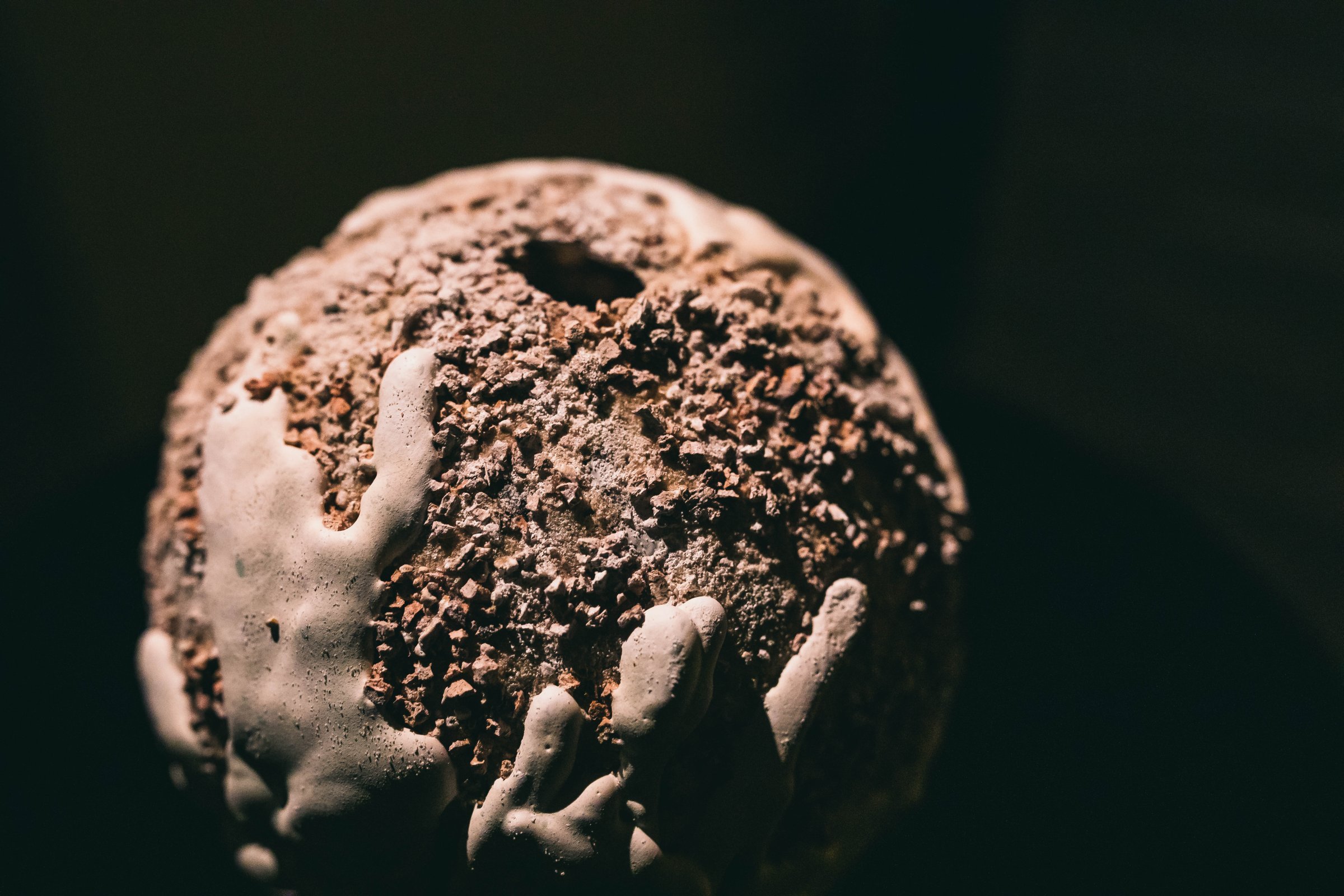
How do other planets smell? Like a refrigerator at 3AM? Like the box new sneakers come in? Or the inside of an astronaut’s space suit? A three-day exhibition held in the crypt of a 19th century English church this weekend promised answers. “The Scent of Other Worlds” would present eight “sniffable” sculptures—one for each of the other planets in our solar system, plus the sun — and feature an “interplanetary soundscape” along with cosmic-themed cocktails.
On Saturday, a group of Londoners eager to smell other worlds filed into the shabby-chic vestibule of St. John’s church in the city’s East End. In the crypt below, each sculpture stood on a plinth — inscribed with facts about the planet it represented and connected to the sort of foot pump used to inflate mattresses. When stepped on, the pumps spritzed perfume through the sculptures above. Some would be brought to MIT Space Week March 13, for a 50th anniversary celebration of the first Moon landing, where famous astronauts might sniff them.
Rather than literal renderings of each planet’s smell, it turned out perfume company Design in Scent had used information about their surface composition and atmosphere as inspiration for a selection of fragrances. There hadn’t been a “slavish” devotion to physics, the project’s organizers admitted. Jupiter’s swirling gases were represented by “iso E super and aldehydes that bring a diffusive lightness,” according to one description, while “ambroxan and frankincense bring a spark of rich orange.” Whatever those things were, they smelled pleasantly musky: nothing like rotten eggs, cat pee, or bitter almonds—more likely associations of the layers of sulfur, ammonia, and hydrogen-cyanide that shroud Jupiter.
At an earlier press launch, somebody had banged a gong and a man in a silver jacket stepped out from between the planets to address the crowd. He introduced himself as Sam Bompas. “The exhibit is drawing a line between your nose and the heavenly bodies,” Bompas said. Beside him, Jupiter glowed milky above its plinth. The three chunks of quartz-like rock that made up Venus glittered. You could see all the way through Saturn, which was made from hand-blown glass. This, though, was not the point. “We spend so much of our time articulating the visual world” Bompas continued. But the Scent of Other Worlds, offers “a rich experience with the Aristotelian lower senses.”
Bompas is one half of the duo behind Bompas & Parr, a food design company that made its name shaping gelatin desserts like famous buildings and claims to be the first group to have recorded the sound of jelly wobbling. Other projects have included developing vaporized alcohol that audiences “drink” through their skin and eyes, and taking people “food tripping” with an African berry that tricks the tongue into tasting sour flavors as sweet.
More recently, Bompas has become obsessed with humans’ sense of smell: the brain decodes odors differently depending on which nostril sniffs them; which of the two nostrils is dominant switches throughout the day; and shortly after shaking somebody’s hand, we find a way to sniff our own. “There’s mysteries and wonders to the universe,” he said, “but there’s also mysteries and wonders in your own body.”

In the east London crypt, repeated stomping on the foot pumps made the place smell like a fancy candle shop. Lucy Hardcastle, the London-based artist who designed each planet’s sculpture was smelling their associated fragrances for the first time. Did they match her idea of how the planets would be? “I don’t know if I can say that for sure,” she said, “but I do know that humans, in terms of psychology, are very accepting of what is presented to them.”
Hardcastle likes working with scents because they have the power to transport audiences in unpredictable, uncontrollable ways. “You don’t really have a say in that. You’re there, even if you don’t mean to be.”
There are some first-hand accounts of the scent of other worlds. Humans have gone to the moon and rovers to Mars and Venus. “It smells like spent gunpowder,” Apollo 17 astronaut Gene Cernan said of Moondust he’d tramped back into his lunar module in 1972, That’s likely on account of lunar soil’s being rich in silicon dioxide. The sulfuric acid clouds on Venus might make it stink of rotten eggs. Meanwhile, the nitrogen and benzene haze that swirls Saturn’s largest satellite Titan probably gives off a gas station funk. Uranus, it was confirmed last year, smells terrible.
But even with spectrometer readings and light-signature analysis, distilling the scent of a planet is a lot of guesswork. Would Jupiter’s poles be different from its tropics? Would the Moon’s Sea of Tranquility and Ocean of Storms smell the same? The visitors to Bompas & Parr’s exhibit this Saturday were none the wiser. But they had stepped through a plywood door on a dreary London evening, and briefly visited another world.
More Must-Reads from TIME
- Donald Trump Is TIME's 2024 Person of the Year
- Why We Chose Trump as Person of the Year
- Is Intermittent Fasting Good or Bad for You?
- The 100 Must-Read Books of 2024
- The 20 Best Christmas TV Episodes
- Column: If Optimism Feels Ridiculous Now, Try Hope
- The Future of Climate Action Is Trade Policy
- Merle Bombardieri Is Helping People Make the Baby Decision
Write to Joseph Hincks at joseph.hincks@time.com